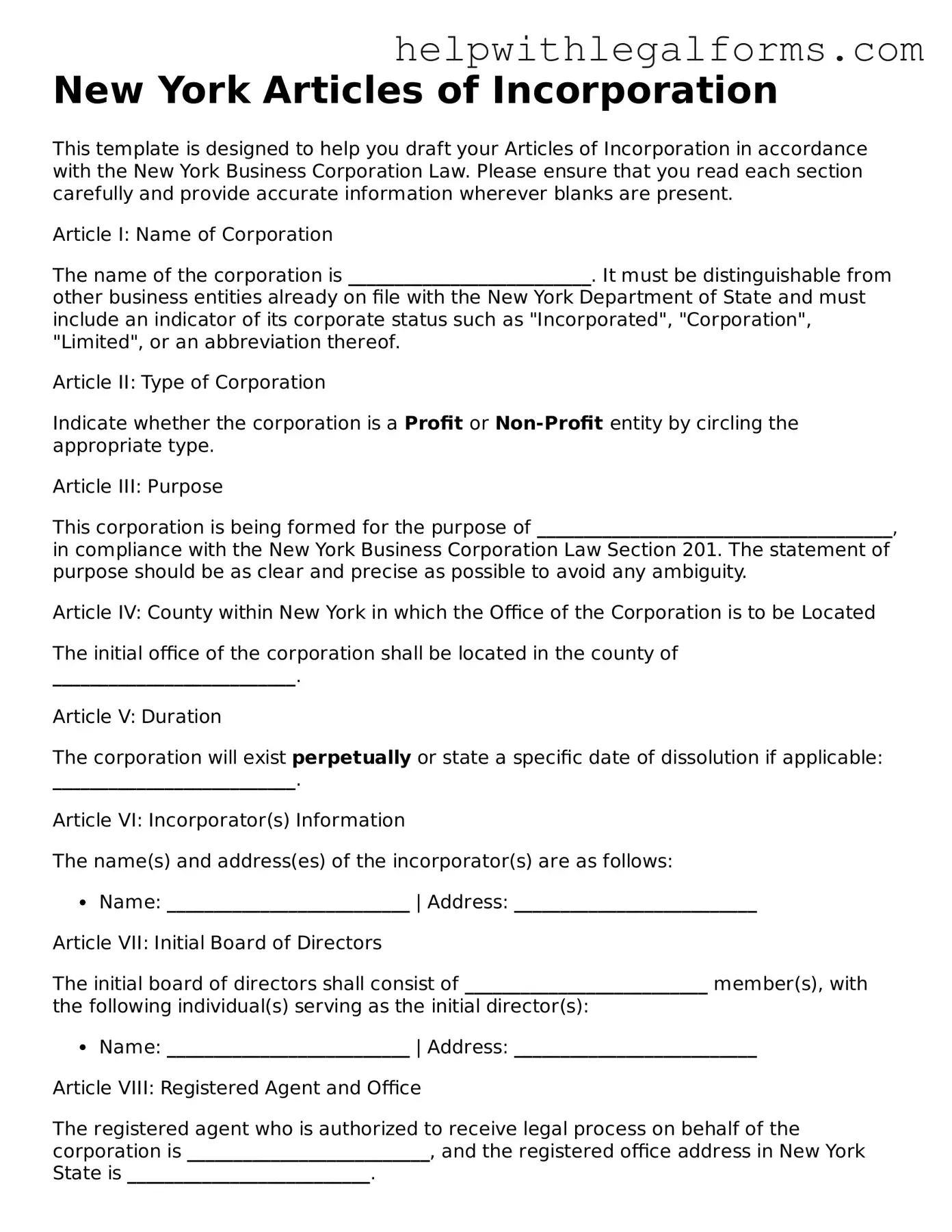New York Articles of Incorporation
This template is designed to help you draft your Articles of Incorporation in accordance with the New York Business Corporation Law. Please ensure that you read each section carefully and provide accurate information wherever blanks are present.
Article I: Name of Corporation
The name of the corporation is __________________________. It must be distinguishable from other business entities already on file with the New York Department of State and must include an indicator of its corporate status such as "Incorporated", "Corporation", "Limited", or an abbreviation thereof.
Article II: Type of Corporation
Indicate whether the corporation is a Profit or Non-Profit entity by circling the appropriate type.
Article III: Purpose
This corporation is being formed for the purpose of ______________________________________, in compliance with the New York Business Corporation Law Section 201. The statement of purpose should be as clear and precise as possible to avoid any ambiguity.
Article IV: County within New York in which the Office of the Corporation is to be Located
The initial office of the corporation shall be located in the county of __________________________.
Article V: Duration
The corporation will exist perpetually or state a specific date of dissolution if applicable: __________________________.
Article VI: Incorporator(s) Information
The name(s) and address(es) of the incorporator(s) are as follows:
- Name: __________________________ | Address: __________________________
Article VII: Initial Board of Directors
The initial board of directors shall consist of __________________________ member(s), with the following individual(s) serving as the initial director(s):
- Name: __________________________ | Address: __________________________
Article VIII: Registered Agent and Office
The registered agent who is authorized to receive legal process on behalf of the corporation is __________________________, and the registered office address in New York State is __________________________.
Article IX: Share Structure
(If applicable) The corporation is authorized to issue __________________________ shares of stock. If more than one class of stock is authorized, then the preferences, limitations, and relative rights of each class should also be described here.
Article X: Additional Provisions
Include any additional provisions that the corporation wishes to include in the Articles of Incorporation that are compliant with New York state law. These may relate to management, shareholder rights, or any other lawful matter.
Article XI: Incorporator Signature
The undersigned incorporator hereby affirms that the information provided in these Articles of Incorporation is true to the best of their knowledge.
Signature: __________________________ | Date: __________________________
